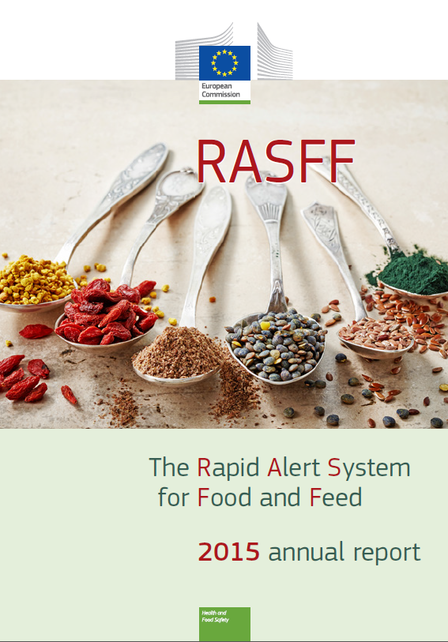Rapid Alert System for Food & Feed (RASFF)
The EU has one of the highest food safety standards in the world – largely thanks to the solid set of EU legislation in place, which ensures that food is safe for consumers. A key tool to ensure the cross-border follow of information to swiftly react when risks to public health are detected in the food chain is RASFF – the Rapid Alert System for Food and Feed.
Created in 1979, RASFF enables information to be shared efficiently between its members (EU-28 national food safety authorities, EU Commission, EFSA, ESA, Norway, Liechtenstein, Iceland and Switzerland) and provides a round-the-clock service to ensure that urgent notifications are sent, received and responded to collectively and efficiently. Thanks to RASFF, many food safety risks had been averted before they could have been harmful to European consumers.
Vital information exchanged through RASFF can lead to products being recalled from the market. A robust system, which has matured over the years, RASFF continues to show its value to ensure food safety in the EU and beyond.
The RASFF annual reports give a profound insight into the activity of the RASFF giving detailed figures for the types of notifications, products, hazards and countries that have been reported through RASFF, including important developments in what is reported in the system as well as about the system itself.
Vital information exchanged through RASFF can lead to products being recalled from the market. A robust system, which has matured over the years, RASFF continues to show its value to ensure food safety in the EU and beyond.
The RASFF annual reports give a profound insight into the activity of the RASFF giving detailed figures for the types of notifications, products, hazards and countries that have been reported through RASFF, including important developments in what is reported in the system as well as about the system itself.
RASFF Portal
|
"Rapid Alert System for Food & Feed" Portal
Enter into the EU portal for RASFF, the EU Food and Feed Safety site. An interactive searchable online database. It gives public access to summary information about the most recently transmitted RASFF notifications as well as the ability to search for information on any notification issued in the past. User Manual |
RASFF Consumers' Portal
DOCUMENTS/INFOGRAPHIC
Implementing regulation and guidance
RASFF Regulation
Commission Regulation (EU) No. 16/2011 lays down the implementing measures for the Rapid Alert System for Food and Feed. It stipulates the duties of the RASFF network members and defines the different types of notifications. It provides for a 24/7 on-duty permanence of the system and tasks the Commission with verifying the RASFF notifications and informing third countries. The Regulation introduces exact deadlines for EU countries (48 hours) as well as the Commission (24 hours) for transmitting alert notifications.
RASFF standard operating procedures (RASFF SOPs)
The RASFF SOPS• are a document written by the RASFF network members to complement the RASFF Regulation. They provide guidance and best practices for the operation of the RASFF. The previous version for the RASFF SOPs and its translations is found here.
These SOPs are supported by working instructions (WI) with practical details on how certain parts of the SOPs should be implemented. Finalised working instructions are available in the next section.
RASFF SOPs – associated working instructions (WI)
- WI 1.1 – updating RASFF contact points information
- WI 1.2 – on-duty arrangements
- WI 2.2 - guidelines for the evaluation of the risk for pesticide residues
- WI 3.1 – RASFF notification templates
- WI 3.2 – rules on informing INFOSAN
- WI 4.1 – rules for flagging and closing out
- WI 5.1 – rules for ensuring upstream transmission of a RASFF notification linkEN•••
- WI 5.2 – guidance for the classification of a notification
- WI 7.1 – downstream distribution of RASFF notifications










